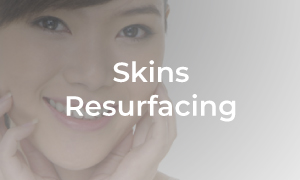Pigmentation of The Skin
Melanin is a natural pigment that gives human skin, hair, and eyes their colours. Dark-skinned people have more melanin in their skin than light-skinned people. Melanin is produced by cells called melanocytes. The colour of melanin is black, allowing it to absorb majority of the UV light and block it from passing through the upper layer of the skin. Melanin protects our skin against damage from the sun, and melanocytes increase their production of melanin in response to sun exposure. The average number of melanocytes in our bodies is the same in all people. In dark-skinned individuals, melanocytes produce more melanin, and melanin degradation occurs slower compared to light-skinned individuals. Tyrosinase is the primary enzyme involves in melanin production. Ultraviolet (UV)radiation stimulates tyrosinase to increase the production of melanin.
UV radiation is a significant cause of skin damage and pigmentation. When the skin is exposed to UV light, melanogenesis or ‘tanning’ occurs to produce more melanin so that the skin is protected against UV damage. After exposure to UV light, the skin develops immediate tanning, caused by oxidation of the existing melanin. This effect appears within a few minutes of exposure to UV light and lasts for 6 to 8 hours. Delayed tanning is seen 2 to 3 days after exposure and lasts for 2 to 3 weeks. In this process, the tyrosinase activity and melanin production increase. The increase in melanin protects the cells by absorbing UV photons and UV-generated free oxygen radicals before these harmful elements can react and damage cell DNAs. In addition to tanning, UV radiation also causes undesirable pigmentation disorders such as melasma (see Melasma) and solar lentigos.
In Asian culture, skin pigmentation and tanning are generally considered undesirable. Many people, especially women, prefer fair and untanned skin. Pigmentation disorders of the skin that are common in Asian population include melasma and solar lentigos. Others common pigmentation problems involving the skin are post-inflammatory hyperpigmentation, dark eye circle and dark armpit.
Many treatments are available to manage skin pigmentation problems by either inhibition of the activity of melanocytes, reducing the production of melanin, or increase the degradation of melanin. Treatment strategy and methods include:
-
-
-
UV protection: Avoid direct sunlight as much as possible. Use high-quality sunscreen with SPF 50 and above. Install UV protective screens on car windscreen and windows. Protective clothing such as a UV-blocking hat and UV-blocking umbrella are also helpful.
-
Topical agents which contain kojic acid, arbutin, azelaic acid, hydroxyl acids, hydroquinone, and retinoids have been proven to reduce skin pigmentation.
-
Laser therapy: Q-Switched Nd-YAG Laser System (Medlite®). Q-switched Nd-YAG laser is useful for the treatment of melasma. The laser delivers high-energy pulses in nano-seconds to selectively break down the melasma pigments without damage to the surrounding tissues.
-
-
Common pigmentation disorders of the skin:
MELASMA (see Melasma)
Melasma is a prevalent skin pigmentation condition in Asian women. Melasma presents as well-defined light to dark brown irregular patches. These pigmented patches usually occur on the malar eminence, cheeks, upper lip, forehead, nose, and chin. The two most important causes of melasma are UV light and the female sex hormone estrogen. Sun exposure is necessary for the development of melasma, and chronic unprotected sun exposure is undoubtedly well known to worsen the condition. Melasma frequently occurs during pregnancy, the use of oral contraceptives and during menopause when the level of sex hormones changes.
Solar Lentigos or Age Spots (see Freckles and Age Spots)
Solar lentigos usually present as brownish spots on the sun-exposed skin in the face and the back of the hand. The lesions are common in the older age group, and men are more commonly affected than women. Prevention of solar lentigos is by sun protection and treatment is by laser.
Post-Inflammatory Hyperpigmentation (PIH)
Post-inflammatory hyperpigmentation presents as skin pigmentation that follows skin injury or inflammation. Post-inflammatory hyperpigmentation involves the deposition of melanin within the epidermis and dermis layers in the damaged skin. PIH spots are located at the site of the original trauma/disease after it has healed. The lesions range from light brown to black. The patches may become darker if exposed to sunlight or UV. Skin conditions such as acne, eczema, and allergic reactions can lead to PIH. Physical trauma to the skin like mosquito bites, burns, cut, and surgery incisions can cause PIH in the scar tissue. Daily use of a good sunscreen is essential in the treatment of PIH. Various topical treatments are available to treat PIH, including hydroquinone, tretinoin cream, corticosteroids, glycolic acid (GA), and azelaic acid. Q-switched Nd-YAG laser is another treatment option for PIH.
Dark Eye Circle
Dark eye circles are an undesirable aesthetic concern for many patients because they give a tired and unwell impression. The cause of dark eye circle includes excessive pigment deposition, allergic reactions, orbital fat herniation, increased subcutaneous vasculature, and sleep deprivation. The treatment of the dark eye circle depends on the underlying cause. Simple measures such as getting adequate sleep and apply cold compression may help in mild and early cases. For more advanced cases, laser treatments such as Q-switched laser and fractional CO2 laser can lighten and resurface the pigmented skin. Filler or fat graft injection can lessen the dark eye circle by improving the lower eyelid contour and removing the tear trough. If eyebag is present together with the dark eye circle, eyebag surgery is an effective treatment modality to remove the eyebag together with the dark eye circle (see Eyebag Surgery)
Dark armpit skin
The colour of the armpit skin normally should be the same as the rest of the body. However, the skin in the armpits can become pigmented and dark. Dark armpit skin can be a source of embarrassment for many people, especially when wearing a sleeveless shirt or swimsuit. Sometimes the darkened skin can also appear in the groin, back of the neck, elbow, and knee. In some patients, the darkening in the armpit skin occurs with skin thickening in a condition called acanthosis nigricans. Treatments are topical skin lightening cream and Q-switched laser.








